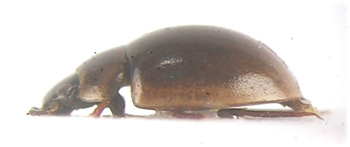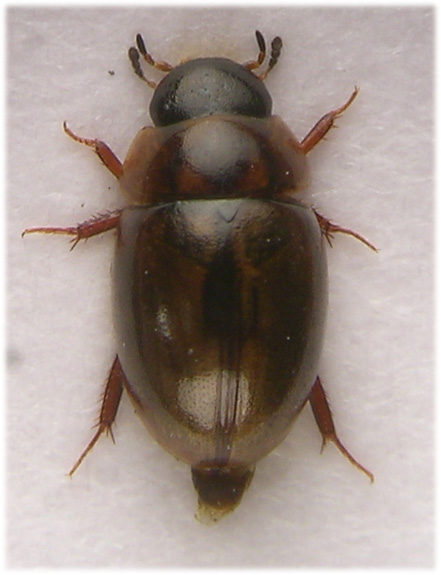Four species occur in Britain of which one, A.lutescens (Stephens), has only recently been recognised following the review of European species by Berge Henegouwen (1986). This had previously been included with A.limbata (Fab.) and so older keys are of limited usefulness. Joy also includes four species but here A.limbata and A.ovata Reich. are now considered as a single species. Each species varies in size, and the size range stated in various works also varies e.g. Joy separates A.globulus on size, 3-3.5mm., but this does not agree well with Berge Henegouwen who states 2-3.3mm. Hansen (1987) gives 2.7-3.3mm which is closer. Of course Joy may not have had an opportunity to examine smaller European specimens. In Friday's key, which is the most recent in english, A.globulus is quoted as 2.5-3mm. Whatever the actual variation in size may be, A.globulus is generally acknowledged as larger than the other species and, given Joy's smaller extra description, this species will usually key out safely, more especially so if another species is available for comparison so that his 'more convex' and 'lesss convex' characteristic, which admittedly he illustrates with line drawings, can be better appreciated.
A.globulus

A.limbata
Two morphological characters are now recognised which will allow our species to be identified and one of these is used in Balfour-Browne's key; he separated A.globulus by its lack of a mesosternal keel and it seems that all keys since have done likewise. Viewing the underside from various lateral angles under strong light will reveal a smooth, albeit often raised, mesosternum. In all other British species there is a raised and pointed process on the mesosternum between the front and middle coxae. This may seem an 'awkward' character to use but it will separate globulus unambiguously; the only other European species with a smooth mesosternum is A.rufipes Guillebeau which does not occur in Britain.
The second morphological character is the extent of the pubescence on the underside of the hind femora. In Paracynus these are shiny when compared with the abdomen. All species of Anacaena with a 'pointed' mesosternum can be identified by examining the hind femora. With a large yellow patch in front of each eye A.bipustulata is distinct and will not be mistaken for any other species. A.limbata, on the other hand, may well be mistaken for A.lutescens and vice versa. Typically A.limbata has a brown, often very faint or very narrow, lateral mark before the eye but we have specimens with completely black heads which is typical of A.lutescens. Separating these two species is not always possible using upperside characters but it is a simple matter when the hind femora are examined. A.limbata (see photo left) is the most extensively pubescent with only the apical fifth or so glabrous. In A.lutescens (as well as A.bipustulata and A.globulus) the hairline is more oblique so leaving more of the basal edge of the femora glabrous.
A.lutescens occurs throughout the UK and A.bipustulata is widespread across southern England and Wales to south Yorkshire and Lancashire (NBN) and so we can expect both species to turn up locally (13/06/08).
A.limbata |
A.lutescens |
Reference
Berge Henegouwen, A. van. 1986. Revision of the European species of Anacaena. Ent.Scand. 17:393-407
A.globulus

A.limbata